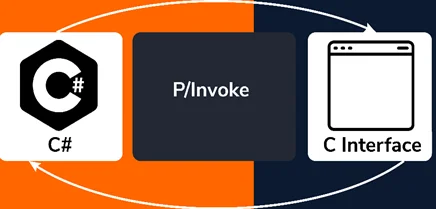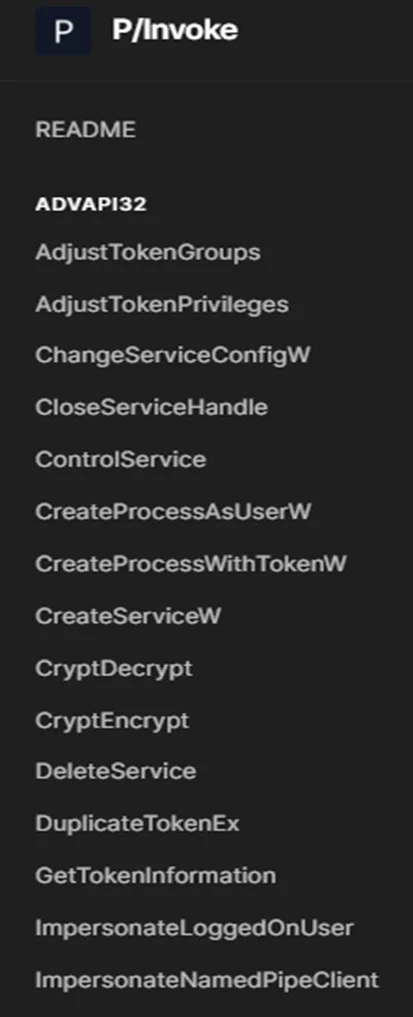
The Win32 API—also known as the Windows API—provides developers with direct access to the core functionalities of the Windows operating system. Acting as a bridge between applications and the OS, these APIs enable developers to interact with system resources, perform low-level operations, and build powerful, feature-rich applications.
At the heart of Windows programming, the Win32 API offers a broad range of capabilities: window management, file and directory handling, device I/O, network operations, and more. For any developer looking to fully leverage the Windows platform, understanding Win32 APIs is a must.
In this blog, we will explore how to leverage Win32 APIs in C# using Platform Invocation (P/Invoke), understand their architecture, and learn how to integrate them effectively into your projects.
To effectively use Win32 APIs through Platform Invocation (P/Invoke), it’s essential to understand their structure.
Win32 APIs are composed of numerous dynamic-link libraries (DLLs)—each containing a collection of functions available for developers to call.
The API’s architecture revolves around two key principles:
Messages – Events or commands exchanged between the system and applications.
Windows – The primary interface for receiving and processing these messages.
By mastering this architecture, developers can interact directly with Windows—managing windows, handling system messages, and accessing underlying system resources.
Platform Invocation (P/Invoke) is a .NET feature that allows managed code (like C#) to call unmanaged code (like native Win32 functions). This bridge lets developers access powerful Windows functionalities while retaining the productivity and safety of C#.

To begin using Win32 APIs in a C# project:
Declare the Win32 function you wish to call.
These declarations specify the function’s name, parameters, and return type.
Use the [DllImport] attribute to tell the .NET runtime where to find the function and how to invoke it.
For example:
[DllImport("kernel32.dll")]
public static extern IntPtr LoadLibraryW(string lpLibFileName);
3. Set up data structures and attributes to marshal data correctly between managed and unmanaged memory.
By following these steps, you can seamlessly integrate native Windows functionality into your C# applications.
Win32 APIs provide a vast array of functions covering various aspects of Windows programming. Let’s take a closer look at some commonly utilized API functions and see how they can be utilized within C# projects.
These are only some of the many Win32 API functions available for use in C# projects. By familiarizing yourself with their respective documentation and P/Invoke calls, you can unlock the full power of Windows platform within your C# apps.
A great list of all Win32 API imports using P/INVOKE can be seen on pinvoke.dev:

Working with Win32 APIs using P/Invoke in C# requires careful handling of data types and parameters. As many Win32 APIs employ data types that differ from those within the.NET framework, accurate conversion and parameter marshalling must take place for seamless communication between managed and unmanaged code.
Win32 API typically uses C-style strings (null-terminated character arrays) for text operations; C# however uses strings represented by.NET objects instead, so when passing strings between managed and unmanaged code you must marshal them appropriately to ensure compatibility.
P/Invoke provides various attributes and utility classes to facilitate data type conversion and parameter marshalling so that Win32 API functions can be seamlessly utilized within C# projects.
Once you are familiar with Win32 APIs and using P/Invoke in C# projects, advanced techniques can help enhance your applications further.
These advanced techniques offer C# developers many possibilities, enabling them to create high-performance, feature-rich apps that seamlessly integrate with Windows platform.
Let’s examine some real-world examples to demonstrate the practical use of Win32 APIs in C# programming.
By studying and applying real-world examples of Win32 API usage within C# programming projects, you will gain practical experience using Win32 APIs effectively in C# projects.
Win32 APIs offer an invaluable foundation for Windows programming, enabling developers to gain access to system resources and perform low-level operations with ease. Leveraging them within C# projects using Platform Invocation (P/Invoke), developers can take full advantage of both C#’s simplicity and features as a language as well as all that Windows can provide them.
Through this guide, we have introduced the essentials of Win32 APIs, their architecture, and how to effectively utilize them in C# projects. Furthermore, we discussed advanced techniques, real-world examples and tips and best practices for working with Win32 APIs and P/Invoke.
Applying what you learn in this guide and exploring its resources and references, you can unlock the power of Win32 APIs to develop robust applications that seamlessly integrate with Windows OS. Get started taking advantage of them today in your C# projects!
Redfox Security is a diverse network of expert security consultants with a global mindset and a collaborative culture. If you are looking to improve your organization’s security posture, contact us today to discuss your security testing needs. Our team of security professionals can help you identify vulnerabilities and weaknesses in your systems and provide recommendations to remediate them.
“Join us on our journey of growth and development by signing up for our comprehensive courses.”